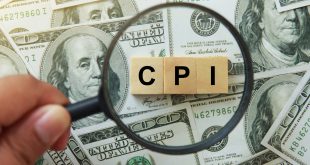When will the Bank of England announce its interest rate decision, and what potential impact could it have on GBP/USD?
The Bank of England is widely anticipated to increase the Bank Rate, its benchmark interest rate, by 25 basis points (bps), moving it from 5.25% to 5.50%, with the announcement scheduled for 11:00 GMT. This adjustment would bring borrowing costs to their highest level since 2007.
The key question revolves around whether this will mark the final move by the more hawkish members of the Bank of England. There is a possibility that the UK’s central bank might adopt a dovish stance similar to the European Central Bank (ECB) by indicating the potential conclusion of its rate hike cycle due to mounting concerns about stagflation risks.
In the second quarter, the UK’s economy surpassed expectations by expanding by 0.2%, contrary to stagnation forecasts. Nevertheless, economists remain cautious about the economic outlook, as the effects of higher rates have yet to fully materialize.
During the same period, the Unemployment Rate increased from 4.2% in the three months to June to 4.3% in the quarter through July. In July alone, the economy shed 207,000 jobs, following a loss of 66,000 jobs in June. Meanwhile, Average Earnings, excluding bonuses, grew by 7.8% YoY in July, in line with expectations and at a jointly record-setting pace.
Given the backdrop of a slowing economy and a loosening labor market, the Bank of England may choose to signal a pause after the anticipated rate hike. Goldman Sachs and Citigroup are among those who expect this decision to mark the end of the Bank’s rate hikes.
Governor Andrew Bailey recently stated that the Bank of England is “much closer” to concluding its tightening cycle. However, Catherine Mann, a member of the Bank’s Monetary Policy Committee (MPC), expressed a preference for erring on the side of over-tightening, emphasizing the risks of underestimating inflation’s persistence.
Unexpectedly, a decrease in UK inflation has cast uncertainty over the Bank of England’s rate hike plans. Bailey and his colleagues might consider a pause, particularly as services inflation indicates a potential easing of inflationary pressures.
According to the Office for National Statistics (ONS), the UK’s annual Consumer Price Index (CPI) in August rose by 6.7%, a slight drop from the 6.8% increase seen in July, and below the market consensus of a 7.1% rise. The Services CPI increased by 6.8% YoY, down from July’s 7.4% surge. Food and accommodation services were the largest contributors to the decrease in CPI rates, according to the ONS.
Market expectations for a 25 bps rate increase by the Bank of England have dropped from 80% to 50% following the UK’s inflation data release.
Analysts at TD Securities (TDS) have noted that while strong wage data could justify a 25 bps hike, concerns about the disappointing GDP growth, rapidly rising unemployment rate, and the unexpected August inflation dip may lead the MPC to soften its forward guidance, leaning towards a hold stance and signaling the end of the hiking cycle.
If the Bank of England combines a dovish message with a 25 bps rate hike or decides to halt its tightening cycle, GBP/USD could experience a downward movement towards the psychological level of 1.2250. However, if the Bank hints at the possibility of one more rate hike by the end of the year, the Pound Sterling might stage a respectable recovery toward the 1.2500 threshold.
 Noor Trends News, Technical Analysis, Educational Tools and Recommendations
Noor Trends News, Technical Analysis, Educational Tools and Recommendations





